Abstract
Cytotoxic immune response by autologous natural killer (NK) cells against a spontaneous in vitro transformed tumorigenic fibroblast line, VIP-F:T, was studied in a 4 h 51Cr-release microcytotoxicity assay and in a tumor cell neutralization technique in vivo in nude mice. Although highly cytotoxic against the NK prototype target K562, the autologous NK cells in their nascent state were only marginally cytotoxic against VIP-F:T and unreactive against the autologous normal fibroblasts, Pen-F2. Autologous NK activity against VIP-F:T could, however, be induced by 2-16-h treatment of the NK cells with several species of interferon and by interferon-free interleukin 2 (IL-2). In vitro co-culture (IVC) in IL-2 of autologous peripheral blood lymphocytes (PBL) against VIP-F:T was shown by fluorescence activated cell sorting and by cold target competition experiments to generate almost exclusively an effector population bearing HNK-1 and Leu-11a phenotypes which exhibited receptor specificity for VIP-F:T distinct from receptors on Pen-F2 or K562 cells. PBL, co-cultured in IL-2 against Pen-F2 or K562, or cultured in IL-2 alone, generated high levels of nonspecific killing and showed no receptor specificity. Identical IVC in IL-2 of autologous PBL against a melanoma line, VIP (PBL and the VIP line derived from the same patient from whom the VIP-F:T line was also derived), and similar IVC in IL-2 of several other autologous PBL against their corresponding target cell lines (established from surgical specimens) generated cytotoxic responses involving cytotoxic populations bearing T8 as well as HNK-1 phenotypes; but the cytotoxic activities in none of these systems showed target receptor specificity. Autologous PBL, co-cultured against VIP-F:T in IL-2, were shown to be capable of rejecting tumorigenic challenge with VIP-F:T.3 (a clone of VIP-F:T) in nude mice at effector to VIP-F:T ratio of 10:1. The protective effect of the co-culture activated PBL was abrogated if the HNK-1+ cells were depleted from the effector population. Our data, thus, demonstrate specificity of cytotoxic reactivity which, by phenotypic markers, can be characterized as HNK-1 and Leu 11a+ cells under these experimental conditions against this particular in vitro transformed VIP-F:T line. In addition, this study shows that similar studies of cytotoxic autologous reactivities against in vitro transformed target cell lines will provide valuable information on the subject of NK-mediated surveillance against human neoplasia.
Full text
PDF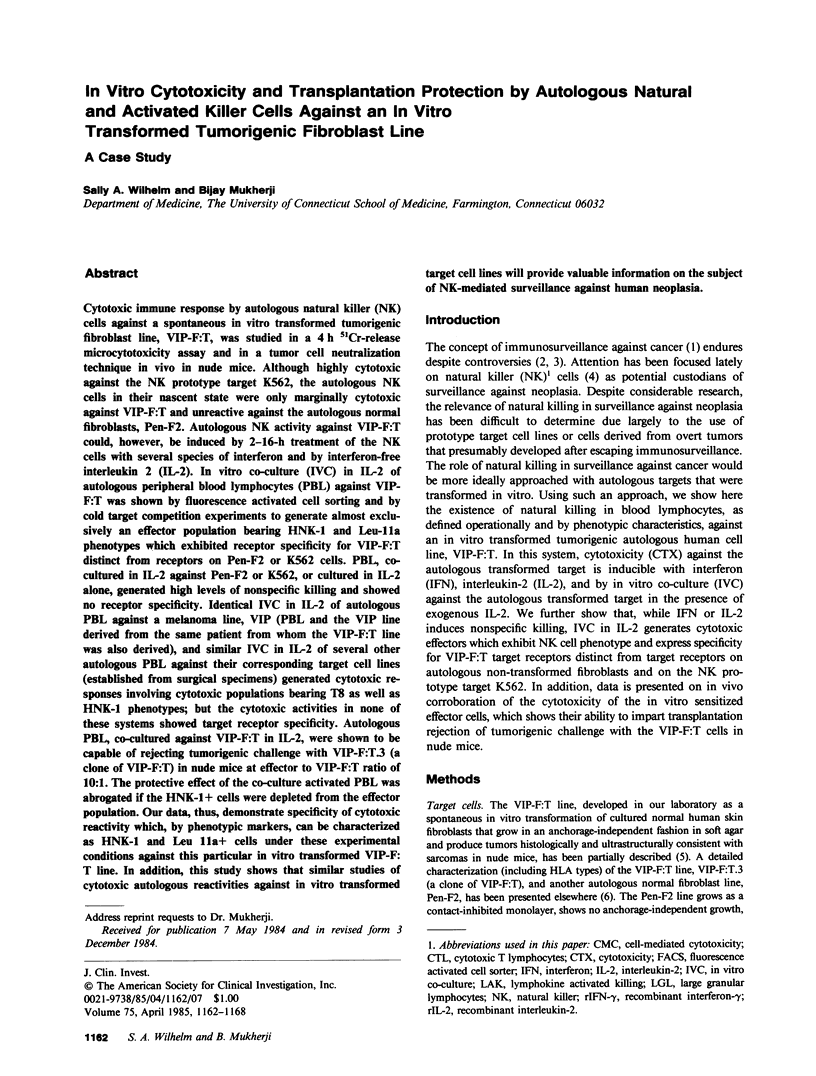
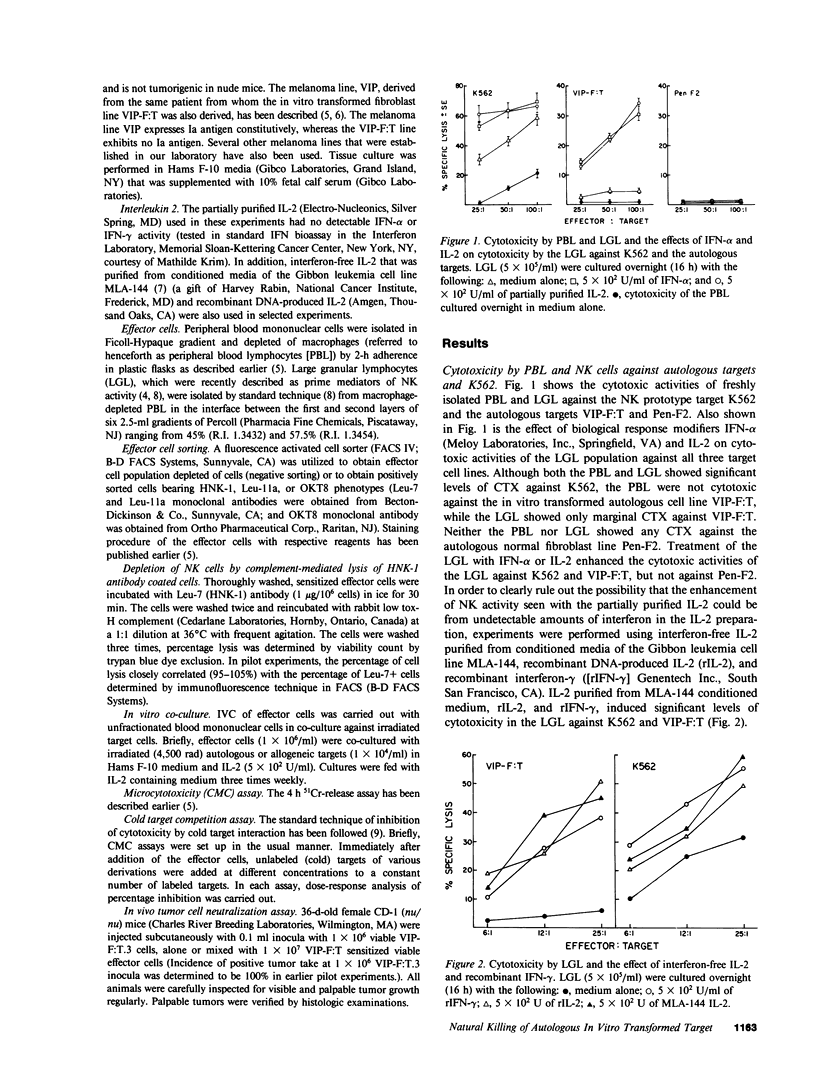
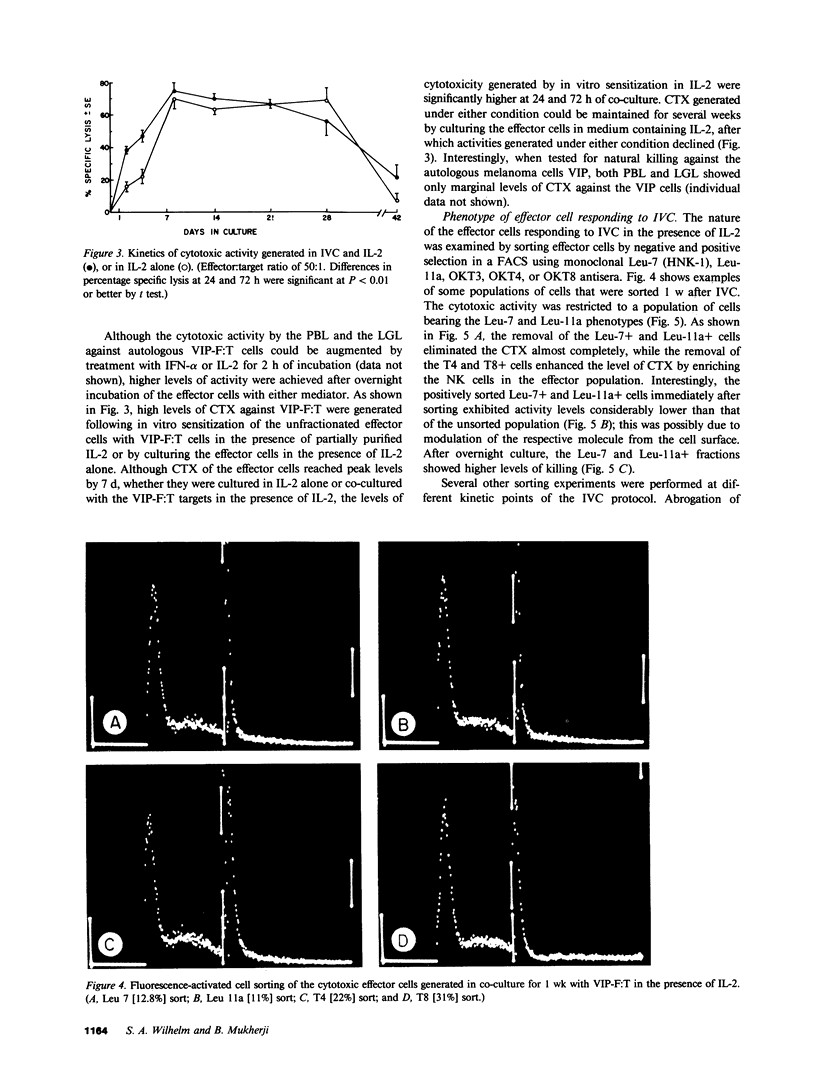
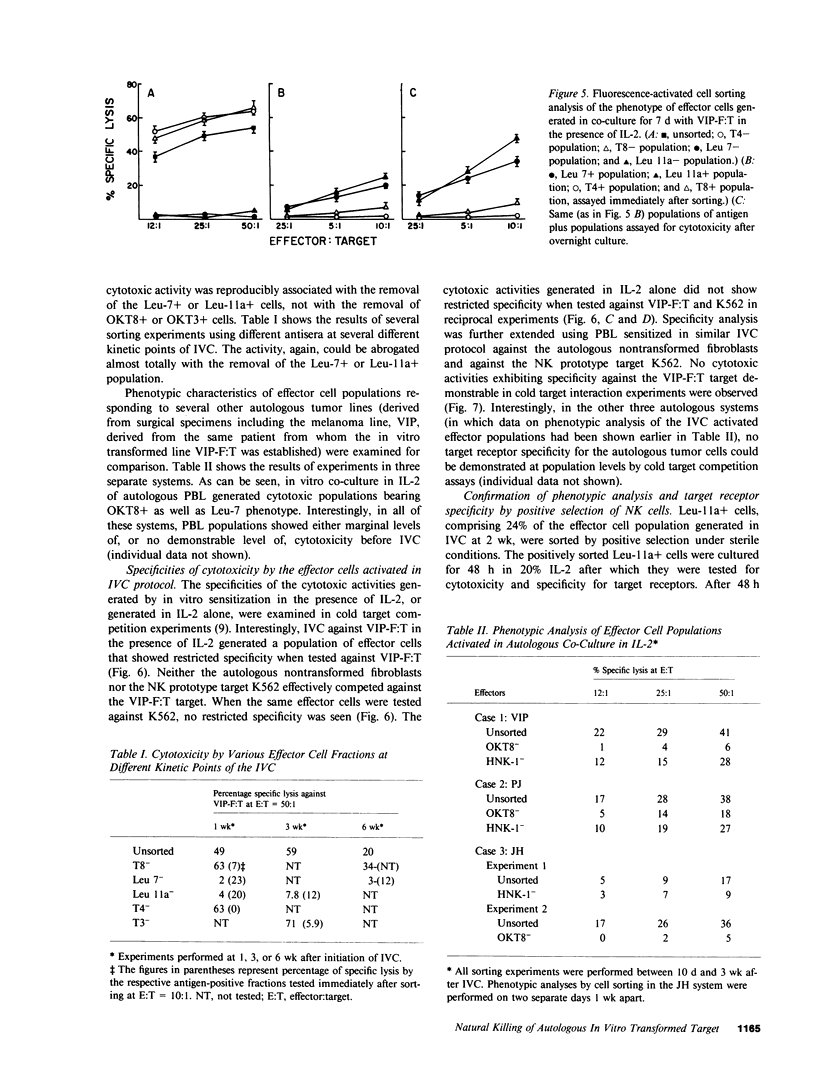
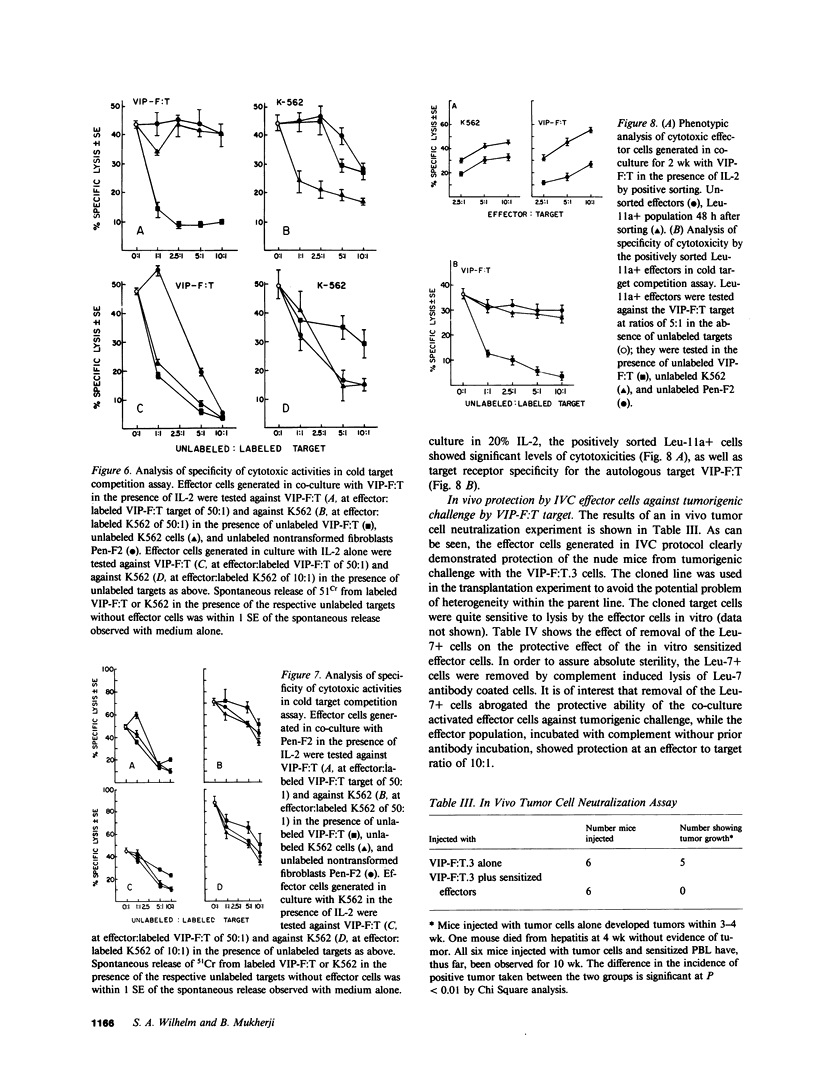
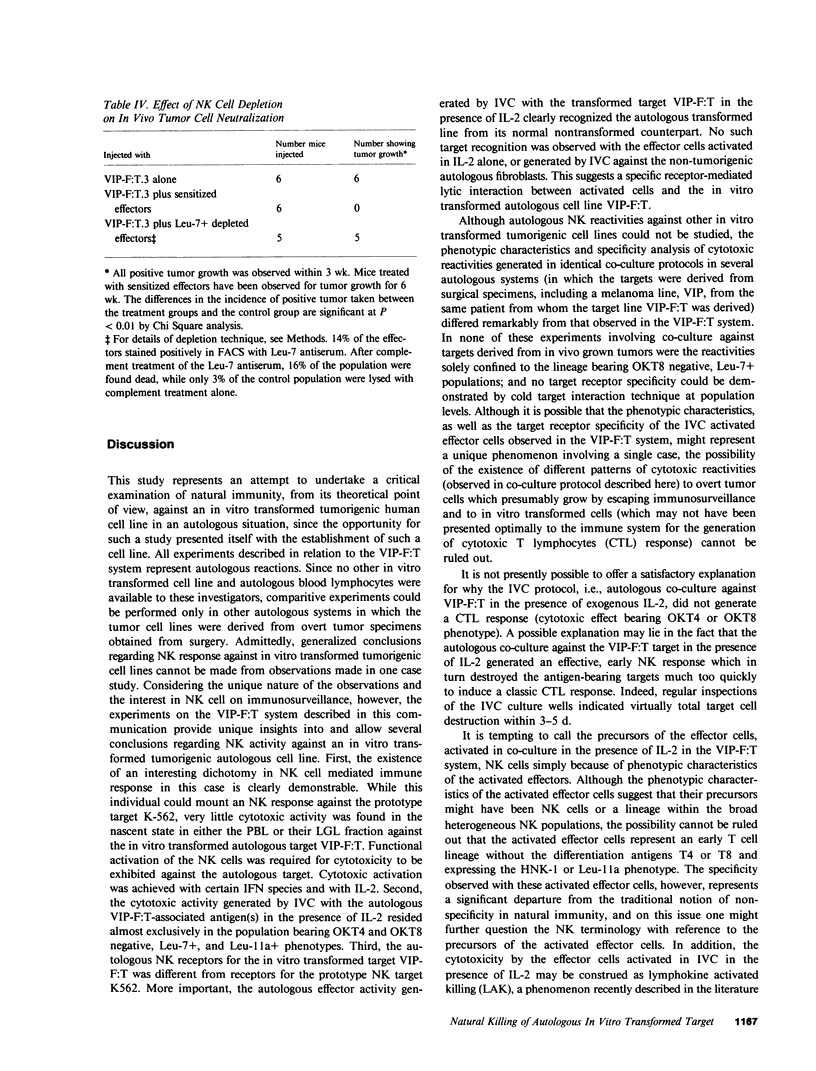
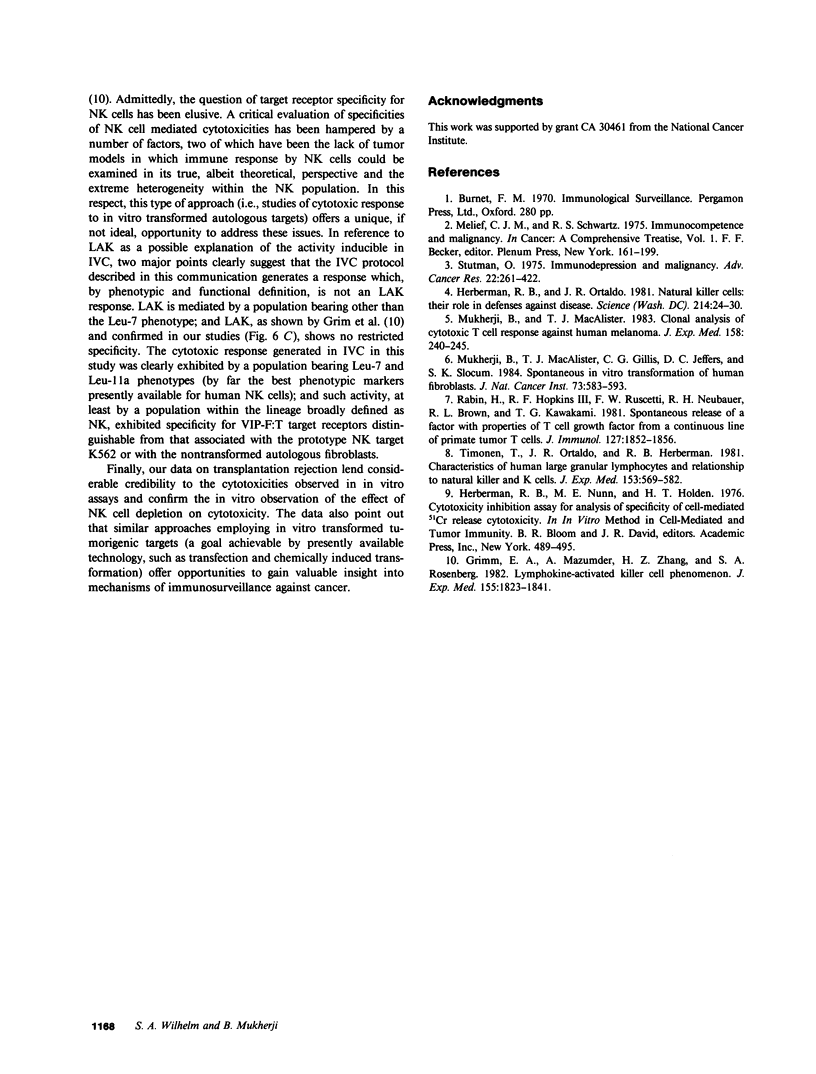
Images in this article
Selected References
These references are in PubMed. This may not be the complete list of references from this article.
- Grimm E. A., Mazumder A., Zhang H. Z., Rosenberg S. A. Lymphokine-activated killer cell phenomenon. Lysis of natural killer-resistant fresh solid tumor cells by interleukin 2-activated autologous human peripheral blood lymphocytes. J Exp Med. 1982 Jun 1;155(6):1823–1841. doi: 10.1084/jem.155.6.1823. [DOI] [PMC free article] [PubMed] [Google Scholar]
- Herberman R. B., Ortaldo J. R. Natural killer cells: their roles in defenses against disease. Science. 1981 Oct 2;214(4516):24–30. doi: 10.1126/science.7025208. [DOI] [PubMed] [Google Scholar]
- Mukherji B., MacAlister T. J. Clonal analysis of cytotoxic T cell response against human melanoma. J Exp Med. 1983 Jul 1;158(1):240–245. doi: 10.1084/jem.158.1.240. [DOI] [PMC free article] [PubMed] [Google Scholar]
- Mukherji B., MacAlister T. J., Guha A., Gillies C. G., Jeffers D. C., Slocum S. K. Spontaneous in vitro transformation of human fibroblasts. J Natl Cancer Inst. 1984 Sep;73(3):583–593. [PubMed] [Google Scholar]
- Rabin H., Hopkins R. F., 3rd, Ruscetti F. W., Neubauer R. H., Brown R. L., Kawakami T. G. Spontaneous release of a factor with properties of T cell growth factor from a continuous line of primate tumor T cells. J Immunol. 1981 Nov;127(5):1852–1856. [PubMed] [Google Scholar]
- Stutman O. Immunodepression and malignancy. Adv Cancer Res. 1975;22:261–422. doi: 10.1016/s0065-230x(08)60179-7. [DOI] [PubMed] [Google Scholar]
- Timonen T., Ortaldo J. R., Herberman R. B. Characteristics of human large granular lymphocytes and relationship to natural killer and K cells. J Exp Med. 1981 Mar 1;153(3):569–582. doi: 10.1084/jem.153.3.569. [DOI] [PMC free article] [PubMed] [Google Scholar]






